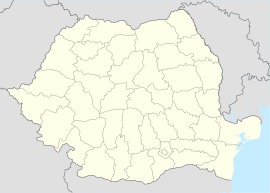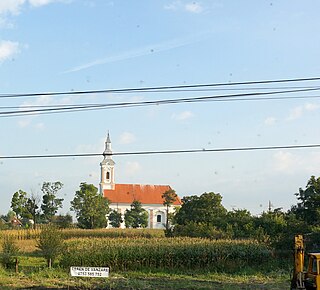
Becicherecu Mic is a commune in Timiș County, Romania. It is composed of a single village, Becicherecu Mic. It also included Dudeștii Noi until 2004, when it was split off to form a separate commune. Its name means "Small Becicherec", as opposed to the "Great Becicherec", located in Serbia and renamed Zrenjanin in 1946.
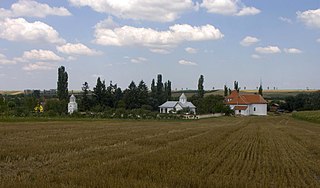
Gătaia is a town in Timiș County, Romania. It administers five villages: Butin, Percosova, Sculia, Șemlacu Mare, and Șemlacu Mic. Declared a town in 2004, it also administered four other villages until that time, when they were split off to form Birda commune.

Chevereșu Mare is a commune in Timiș County, Romania. It is composed of three villages: Chevereșu Mare, Dragșina and Vucova.

Darova is a commune in Timiș County, Romania. It is composed of three villages: Darova, Hodoș and Sacoșu Mare. Ștefănești existed as a separate hamlet from 1885 to 1930, when it was merged into Darova, with Darova Nouă similarly absorbed in 1956.

Ghimeș-Făget is a commune in Bacău County, Romania. It is the only commune in the county that lies in the historical region of Transylvania.

Boldur is a commune in Timiș County, Romania. It is composed of four villages: Boldur, Jabăr, Ohaba-Forgaci and Sinersig.

Bethausen is a commune in Timiș County, Romania. It is composed of six villages: Bethausen, Cladova, Cliciova, Cutina, Leucușești and Nevrincea.

Bara is a commune in Timiș County, Romania. It is composed of five villages: Bara, Dobrești, Lăpușnic, Rădmănești and Spata. Bara is located in the northeast of Timiș County, in a hilly area, 70 km (43 mi) from Timișoara and 30 km (19 mi) from Lugoj.
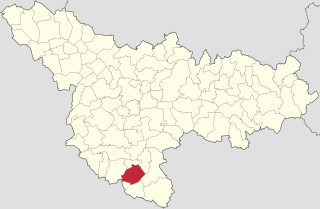
Denta is a commune in Timiș County, Romania. It is composed of four villages: Breștea, Denta, Rovinița Mare and Rovinița Mică.

Curtea is a commune in Timiș County, Romania. It is composed of three villages: Coșava, Curtea and Homojdia.
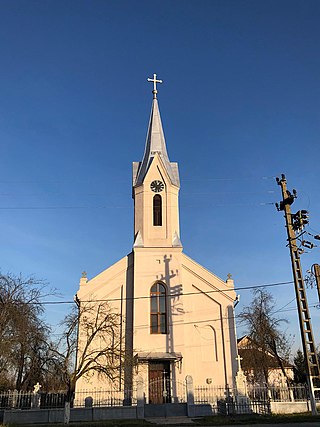
Coșteiu is a commune in Timiș County, Romania. It is composed of five villages: Coșteiu, Hezeriș, Păru, Țipari and Valea Lungă Română. It is located on the right bank of the Timiș River, downstream from Lugoj.

Mănăștiur is a commune in Timiș County, Romania. It is composed of four villages: Mănăștiur, Pădurani, Remetea-Luncă and Topla. It is located in the contact area of the Lugoj Plain with the Lipova Plateau, on the upper course of the Bega River.

Margina is a commune in Timiș County, Romania. It is composed of nine villages: Breazova, Bulza, Coșevița, Coșteiu de Sus, Groși, Margina, Nemeșești, Sintești and Zorani.

Liebling is a commune in Timiș County, Romania. It is composed of three villages: Cerna, Iosif and Liebling.

Jebel is a commune in Timiș County, Romania. It is composed of a single village, Jebel, and also included Pădureni village until 2004, when it was split off to form a separate commune.

Remetea Mare is a commune in Timiș County, Romania. It is composed of two villages, Ianova and Remetea Mare.

Secaș is a commune in Timiș County, Romania. It is composed of four villages: Checheș, Crivobara, Secaș and Vizma.

Vălcani is a commune in Timiș County, Romania. It is composed of a single village, Vălcani. An independent commune from 1877 to 1968, it was a village of Dudeștii Vechi commune from that year until 2005, when it again became independent.
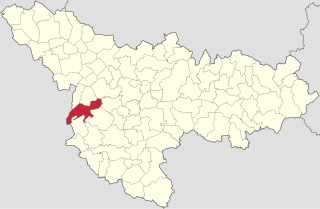
Uivar is a commune in Timiș County, Romania. It is composed of four villages: Pustiniș, Răuți, Sânmartinu Maghiar and Uivar. Two other villages, Otelec and Iohanisfeld, which had been part of Uivar commune since 1968, were split off in 2008 to form Otelec commune.

Topolovățu Mare is a commune in Timiș County, Romania. It is composed of six villages: Cralovăț, Ictar-Budinț, Iosifalău, Șuștra, Topolovățu Mare, and Topolovățu Mic.



